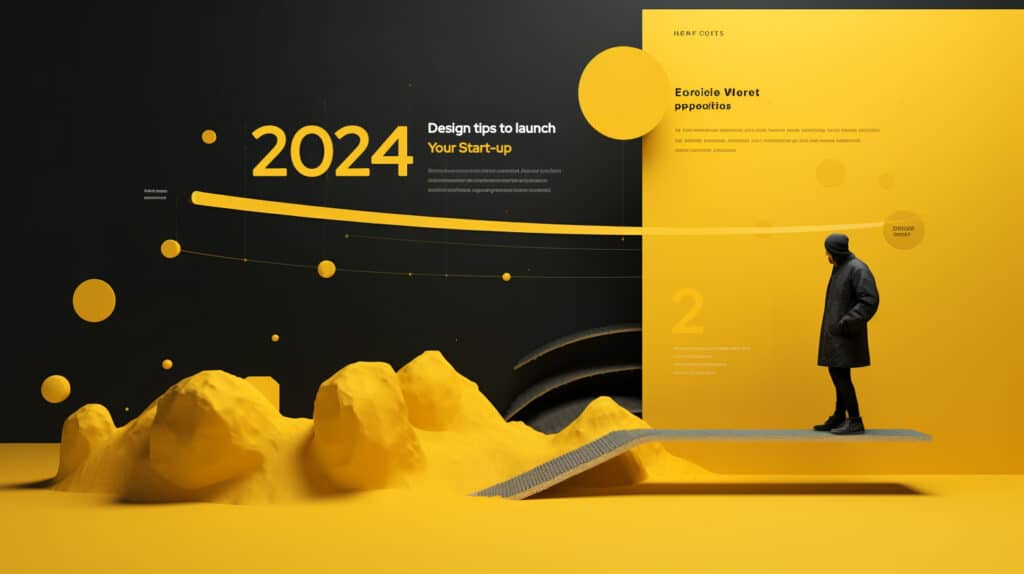

Devstars
As an entrepreneur in 2024, you have many options to build a professional web presence for your startup. A polished startup website is essential to appearing credible and attracting customers. You could take a DIY approach, hire a freelance web designer, or work with a web design agency. Each path has pros and cons based on your budget, technical skills, and design needs. Off-the-shelf themes provide an easy start but lack customization.
Bespoke web design ensures a unique brand experience tailored to your vision. In this article, you will discover 20 tips to launch a startup website that establishes your brand and engages visitors. With the right strategy and tools, you can have an impactful web design that fuels business growth within your first year. The key is balancing aesthetics and functionality to create an optimal user experience on any device. Let’s explore how to make that happen.

A website is a vital part of any startup’s success. As a new business owner, you have two main options for web design: do it yourself or outsource it to professionals. Each approach has its pros and cons.
Building your startup website using drag-and-drop website builders like Wix or WordPress is budget-friendly and gives you full control over the design. However, without technical expertise, you may end up with a site that lacks functionality or a polished UX.
Hiring a freelance web designer or agency ensures an attractive, user-friendly website. They have the skills and experience to incorporate must-haves like SEO-optimised content, e-commerce functionality or security measures.
For a startup website, a professional design is worth the investment. An attractive, feature-rich website establishes credibility and drives traffic and conversions. While DIY seems appealing, for long-term success, outsourcing to professionals is your best strategy. They can build a custom solution tailored to your needs, allowing you to focus on running your new business.
Top 10 Web Design Tips for Startups and Small Businesses
You have two main options when designing your startup’s website: bespoke website design or an off-the-shelf theme. Both have pros and cons, so you’ll need to determine which approach best fits your needs and budget.
A bespoke website is custom-designed for your specific business. While more expensive upfront, it will be tailored to your brand and goals. Key benefits include:
Off-the-shelf themes provide an affordable and quick solution but lack customisation. You’re limited to the theme’s default design and features. While suitable for simple sites, key downsides for startups include:
In summary, while off-the-shelf themes save time and money initially, bespoke design is the smarter long-term investment for your startup website. The custom approach will yield a site perfect for engaging your audience and supporting your growth. Find out more here.
As a startup or small business owner, your website is often the first impression potential customers will have of your company. An attractive yet functional website can attract more visitors, generate more leads, and increase sales. Here are some key tips for effective web design:
Also check out: Low-Code and No-Code Platforms: An Affordable Web Design Option
Aim for a page load time of 3 seconds or less. Fast-loading sites rank higher in search results and have better user experience. Compress images, minimise redirects, and optimise code. Consider a content delivery network (CDN) to distribute your site globally.
With mobile searches surpassing desktop, your site must be optimised for mobile devices. Use a responsive design or adaptive design. Test how your site displays on multiple mobile devices. Ensure buttons and links are large enough to tap, content fits the screen, and the experience is seamless across devices.
Use keywords in your page URLs, e.g. companyname.com/services/seo-consulting. Keep URLs short, simple and consistent. Use hyphens (-) rather than underscores (_). Redirect non-existent pages to active ones.
Link to other relevant content on your site. Use keyword-rich anchor text. Vary the location and number of internal links on pages. Link to external authoritative sites to establish credibility.
Focus on quality over quantity. Publish long-form, in-depth content around your main keywords. Include related terms and synonyms. Use headings, bold text, bullet points and images to break up content. Content should be well-written, factual and provide value to users.
Optimise page titles, meta descriptions and image alt text. Page titles should be about 60 characters, contain your main keyword and compel clicks. Meta descriptions explain your content in 155-160 characters. Image alt text, especially on your homepage, should also contain keywords.
Submit your sitemap to Google Search Console to help index your new content. Fix any crawl errors or issues. Optimise your site for voice search by using conversational content and FAQ schema. Learn about and implement any algorithm updates to stay ahead of trends.
By focusing on these areas, you can improve your startup website’s search rankings through an optimised user experience and high-quality, keyword-rich content. An SEO professional can help implement best practices to future-proof your website. With constant changes in algorithms and technology, SEO is an ongoing process, but following these tips will set you up for success.
Send us a brief message outlining
your project and we’ll get back to
you asap to discuss your project
in more detail.